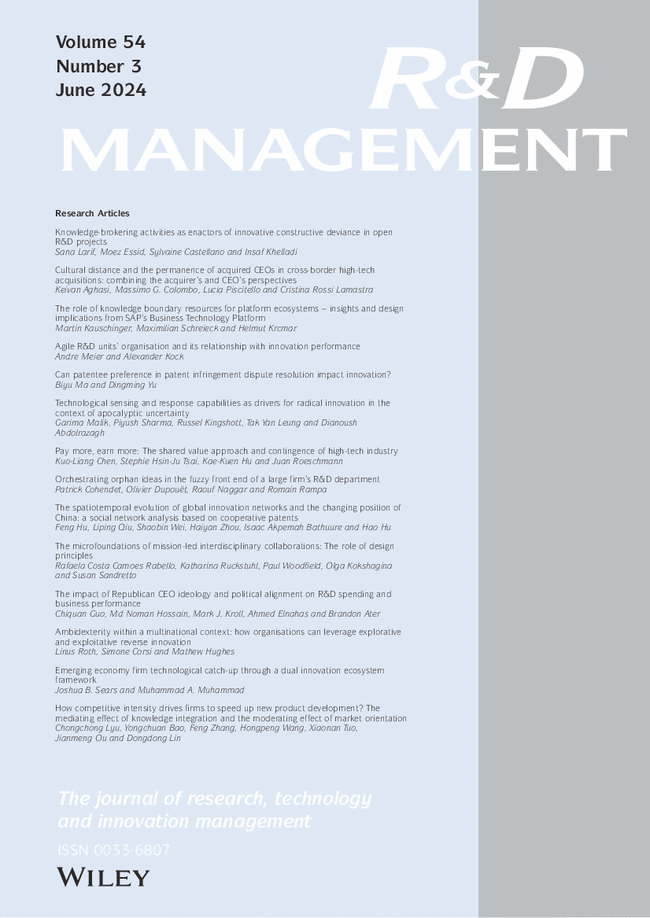Digitalization and employment in Europe: the role of firm's size and the complementarity of R&D
IF 5.7
2区 管理学
Q1 BUSINESS
引用次数: 0
Abstract
The empirical research finds a contingent, slightly positive net effect on the relationship between digitalization and employment, resulting from the automation and reinstatement of jobs, the two countervailing forces revealed by the theoretical literature. We dig down at the features of this relationship, using two waves of Innobarometer surveys to capture the innovation investments of a sample of European enterprises in 2015 and 2016. Adding to previous studies, we identify an inverted U‐shape between degrees of digitalization and employment; this effect is more prominent in small companies with fewer than 50 employees. The effect diminishes for very large companies. In addition, we show complementarity links between research and development (R&D) investments and digital ones proxied by investing in software development and acquiring hardware and software. Specifically, we find support for a positive association between employment and investment in information technology (IT) assets and R&D. On average, companies that invest in both IT and R&D have 11.5% more employees than those that embrace just one. While we observe that small companies that invest in either type of IT asset employ more people, at larger enterprises, the positive effect is only found when they invest in both. The study supports the findings using alternative regression methods, quantile, and Lewbel instrumental variables.数字化与欧洲就业:企业规模的作用和研发的互补性
实证研究发现,数字化与就业之间的关系存在一种偶然的、略微正向的净效应,这是由理论文献揭示的两种相互抵消的力量——自动化和就业恢复所产生的。我们深入研究了这种关系的特征,利用Innobarometer的两波调查来捕捉2015年和2016年欧洲企业样本的创新投资。在之前的研究基础上,我们发现数字化程度与就业之间呈倒U型关系;这种影响在员工少于50人的小公司中更为突出。对于非常大的公司,这种影响会减弱。此外,我们还展示了研究与开发(R&D)投资与通过投资软件开发和获取硬件和软件来代理的数字投资之间的互补性联系。具体而言,我们发现就业与信息技术(IT)资产投资和研发之间存在正相关关系。平均而言,同时投资于IT和研发的公司比只投资于IT和研发的公司多出11.5%的员工。虽然我们观察到,投资于任何一种IT资产的小公司雇用更多的人,但在较大的企业中,只有当他们同时投资于这两种资产时,才会发现积极的影响。本研究使用替代性回归方法、分位数和鲁贝尔工具变量支持研究结果。
本文章由计算机程序翻译,如有差异,请以英文原文为准。
求助全文
约1分钟内获得全文
求助全文
来源期刊

R&D Management
Multiple-
CiteScore
11.30
自引率
9.50%
发文量
0
期刊介绍:
R&D Management journal publishes articles which address the interests of both practising managers and academic researchers in research and development and innovation management. Covering the full range of topics in research, development, design and innovation, and related strategic and human resource issues - from exploratory science to commercial exploitation - articles also examine social, economic and environmental implications.
 求助内容:
求助内容: 应助结果提醒方式:
应助结果提醒方式:


